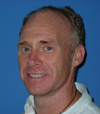 This issue concludes our celebration of 50 years serving the microwave industry. We hope you have enjoyed this year- long look at our shared history—the reprints of past articles and special retrospective reports, as well as the projections of the future by all our guest contributors.
This issue concludes our celebration of 50 years serving the microwave industry. We hope you have enjoyed this year- long look at our shared history—the reprints of past articles and special retrospective reports, as well as the projections of the future by all our guest contributors.
Without a doubt, 2008 was a transformational year for the entire world—politically, economically and socially. Last January, few could have predicted what would transpire over the next 12 months, except for those with the right information. Certain commodities traders undoubtedly saw data suggesting insufficient oil reserves for the upcoming high demand summer months and on speculation drove the price of gas to a point that shocked the rest of us.
Certain insiders saw a presidential campaign so well organized that it would beat the odds despite the barriers of race, relative inexperience and an unfamiliar name. I have yet to hear of anyone who truly foresaw the extent of the current financial market meltdown; perhaps some things, like complex, unregulated securities and human greed, are beyond prediction.
Change is inevitable, yet knowledge turns the surprising into the predictable. Evolutionary change is a slow and deliberate process that transforms the vision of a certain future into the reality of the present. Even disruptive change, characterized by an abrupt event, is usually preceded by a long, slow effort occurring under the radar of the general public. At this year’s WiMAX World in Chicago, IL, a very heated discussion between the merits of WiMAX versus LTE was held during the executive summit. LTE was championed as evolutionary change by its proponents, while WiMAX was positioned as disruptive change. People tend to like evolutionary change. It is smooth and gradual and easy to digest. Yet disruptive change is often responsible for putting technical advancement on a new growth path that leads to even greater opportunity. Both forms of change are critical to the advancement of our profession and next year we will turn the editorial microscope on the evolutionary and the disruptive.
Meanwhile, this past year was filled with evolutionary change at the Journal. Our editors Harlan Howe and Frank Bashore, former publisher Howard Ellowitz and associate publisher Ed “The Colonel” Johnson all retired, while technical editor Patrick Hindle joined our staff. (Note: Frank and Harlan remain active members of our editorial review board). Our long-running “Ask Harlan” feature was transformed into the “Expert Advice” column, replacing Harlan’s expertise with that of a guest expert each month and 15,000 visitors to our site read what they had to say.
Roughly 20,000 engineers and managers joined us for our monthly RF/MW training webinars with Besser Associates. Thousands of you came to our IMS and EuMW online show daily web site and read our blog, downloaded our podcasts and checked out the videos shot from the exhibition hall with companies participating in our Virtual Trade Booths. Next year, you can expect more enhancements to both our print and online mediums. In an ever-changing world, we intend to utilize all available means to keep our readers informed and aware. After all, surprises should be reserved for parties—like when turning 60.
